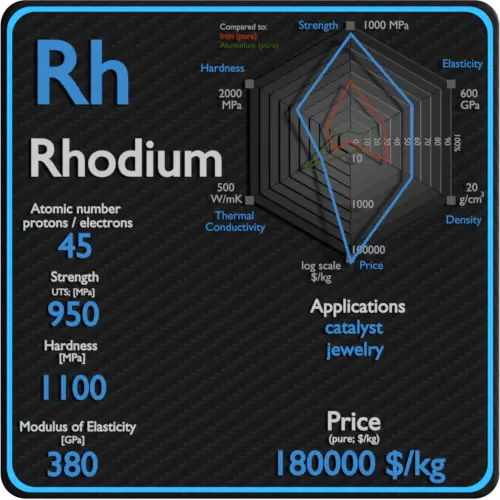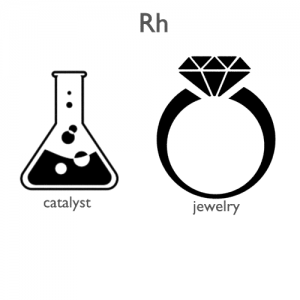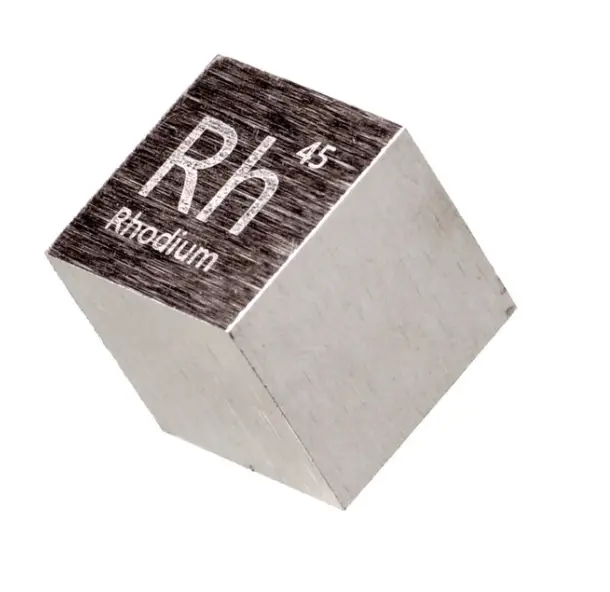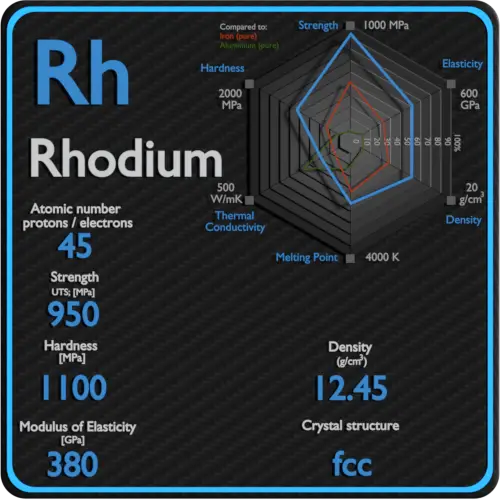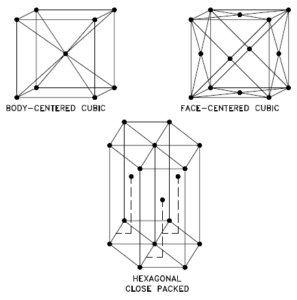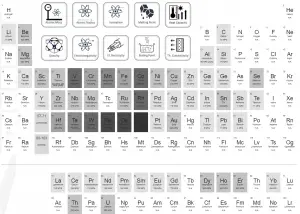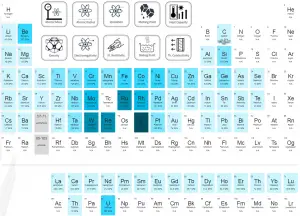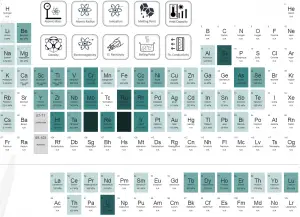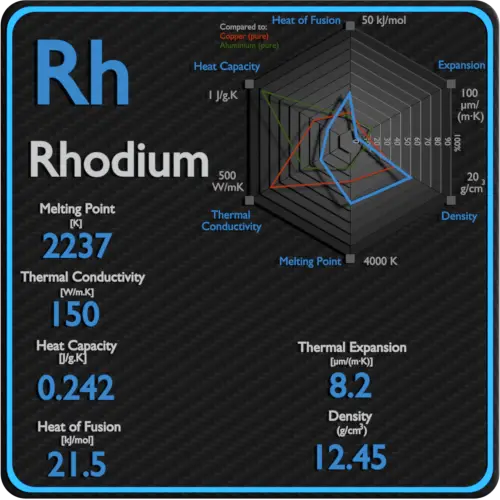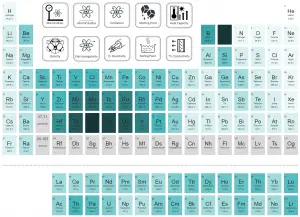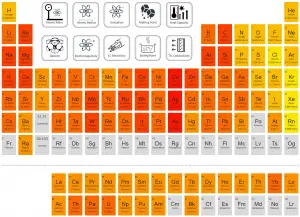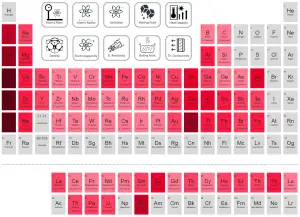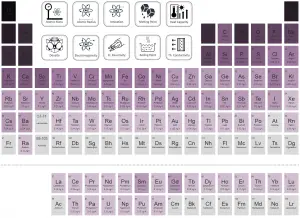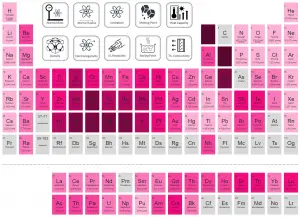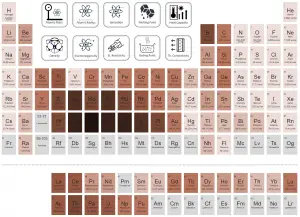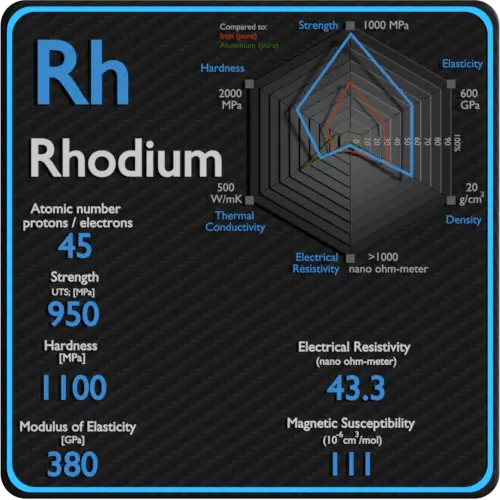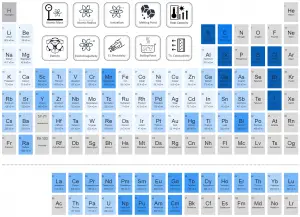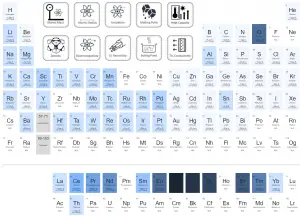About Rhodium
Rhodium is a rare, silvery-white, hard, corrosion resistant and chemically inert transition metal. It is a noble metal and a member of the platinum group.
Summary
| Element | Rhodium |
| Atomic number | 45 |
| Element category | Transition Metal |
| Phase at STP | Solid |
| Density | 12.45 g/cm3 |
| Ultimate Tensile Strength | 950 MPa |
| Yield Strength | N/A |
| Young’s Modulus of Elasticity | 380 GPa |
| Mohs Scale | 6 |
| Brinell Hardness | 1100 MPa |
| Vickers Hardness | 1246 MPa |
| Melting Point | 1964 °C |
| Boiling Point | 3695 °C |
| Thermal Conductivity | 150 W/mK |
| Thermal Expansion Coefficient | 8.2 µm/mK |
| Specific Heat | 0.242 J/g K |
| Heat of Fusion | 21.5 kJ/mol |
| Heat of Vaporization | 493 kJ/mol |
| Electrical resistivity [nanoOhm meter] | 43.3 |
| Magnetic Susceptibility | +111e-6 cm^3/mol |
Applications of Rhodium
The element’s major use (approximately 80% of world rhodium production) is as one of the catalysts in the three-way catalytic converters in automobiles. Because rhodium metal is inert against corrosion and most aggressive chemicals, and because of its rarity, rhodium is usually alloyed with platinum or palladium and applied in high-temperature and corrosion-resistive coatings. In nuclear reactors, rhodium-based detectors are often used for incore neutron flux measuring.
Production and Price of Rhodium
Raw materials prices change daily. They are primarily driven by supply, demand and energy prices. In 2019, prices of pure Rhodium were at around 180000 $/kg.
Of 30,000 kg of rhodium consumed worldwide in 2012, 81% (24,300 kg) went into this application, and 8,060 kg was recovered from old converters. About 964 kg of rhodium was used in the glass industry, mostly for production of fiberglass and flat-panel glass, and 2,520 kg was used in the chemical industry. Rhodium is one of the rarest elements in the Earth’s crust. Its rarity affects its price and its use in commercial applications. The industrial extraction of rhodium is complex because the ores are mixed with other metals such as palladium, silver, platinum, and gold and there are very few rhodium-bearing minerals. The price of rhodium is highly variable. In 2007, rhodium cost approximately eight times more than gold, 450 times more than silver, and 27,250 times more than copper by weight. In 2008, the price briefly rose above $10,000 per ounce ($350,000 per kilogram). The economic slowdown of the 3rd quarter of 2008 pushed rhodium prices sharply back below $1,000 per ounce ($35,000 per kilogram); the price rebounded to $2,750 by early 2010 ($97,000 per kilogram) (more than twice the gold price), but in late 2013, the prices were less than $1000.
Source: www.luciteria.com
Mechanical Properties of Rhodium
Strength of Rhodium
In mechanics of materials, the strength of a material is its ability to withstand an applied load without failure or plastic deformation. Strength of materials basically considers the relationship between the external loads applied to a material and the resulting deformation or change in material dimensions. In designing structures and machines, it is important to consider these factors, in order that the material selected will have adequate strength to resist applied loads or forces and retain its original shape. Strength of a material is its ability to withstand this applied load without failure or plastic deformation.
For tensile stress, the capacity of a material or structure to withstand loads tending to elongate is known as ultimate tensile strength (UTS). Yield strength or yield stress is the material property defined as the stress at which a material begins to deform plastically whereas yield point is the point where nonlinear (elastic + plastic) deformation begins.
See also: Strength of Materials
Ultimate Tensile Strength of Rhodium
Ultimate tensile strength of Rhodium is 950 MPa.
Yield Strength of Rhodium
Yield strength of Rhodium is N/A.
Modulus of Elasticity of Rhodium
The Young’s modulus of elasticity of Rhodium is N/A.
Hardness of Rhodium
In materials science, hardness is the ability to withstand surface indentation (localized plastic deformation) and scratching. Brinell hardness test is one of indentation hardness tests, that has been developed for hardness testing. In Brinell tests, a hard, spherical indenter is forced under a specific load into the surface of the metal to be tested.
Brinell hardness of Rhodium is approximately 1100 MPa.
The Vickers hardness test method was developed by Robert L. Smith and George E. Sandland at Vickers Ltd as an alternative to the Brinell method to measure the hardness of materials. The Vickers hardness test method can be also used as a microhardness test method, which is mostly used for small parts, thin sections, or case depth work.
Vickers hardness of Rhodium is approximately 1246 MPa.
Scratch hardness is the measure of how resistant a sample is to permanent plastic deformation due to friction from a sharp object. The most common scale for this qualitative test is Mohs scale, which is used in mineralogy. The Mohs scale of mineral hardness is based on the ability of one natural sample of mineral to scratch another mineral visibly.
Rhodium is has a hardness of approximately 6.
See also: Hardness of Materials
Rhodium – Crystal Structure
A possible crystal structure of Rhodium is face-centered cubic structure.
In metals, and in many other solids, the atoms are arranged in regular arrays called crystals. A crystal lattice is a repeating pattern of mathematical points that extends throughout space. The forces of chemical bonding causes this repetition. It is this repeated pattern which control properties like strength, ductility, density, conductivity (property of conducting or transmitting heat, electricity, etc.), and shape. There are 14 general types of such patterns known as Bravais lattices.
See also: Crystal Structure of Materials
Crystal Structure of Rhodium

Thermal Properties of Rhodium
Rhodium – Melting Point and Boiling Point
Melting point of Rhodium is 1964°C.
Boiling point of Rhodium is 3695°C.
Note that, these points are associated with the standard atmospheric pressure.
Rhodium – Thermal Conductivity
Thermal conductivity of Rhodium is 150 W/(m·K).
The heat transfer characteristics of a solid material are measured by a property called the thermal conductivity, k (or λ), measured in W/m.K. It is a measure of a substance’s ability to transfer heat through a material by conduction. Note that Fourier’s law applies for all matter, regardless of its state (solid, liquid, or gas), therefore, it is also defined for liquids and gases.
Coefficient of Thermal Expansion of Rhodium
Linear thermal expansion coefficient of Rhodium is 8.2 µm/(m·K)
Thermal expansion is generally the tendency of matter to change its dimensions in response to a change in temperature. It is usually expressed as a fractional change in length or volume per unit temperature change.
Rhodium – Specific Heat, Latent Heat of Fusion, Latent Heat of Vaporization
Specific heat of Rhodium is 0.242 J/g K.
Heat capacity is an extensive property of matter, meaning it is proportional to the size of the system. Heat capacity C has the unit of energy per degree or energy per kelvin. When expressing the same phenomenon as an intensive property, the heat capacity is divided by the amount of substance, mass, or volume, thus the quantity is independent of the size or extent of the sample.
Latent Heat of Fusion of Rhodium is 21.5 kJ/mol.
Latent Heat of Vaporization of Rhodium is 493 kJ/mol.
Latent heat is the amount of heat added to or removed from a substance to produce a change in phase. This energy breaks down the intermolecular attractive forces, and also must provide the energy necessary to expand the gas (the pΔV work). When latent heat is added, no temperature change occurs. The enthalpy of vaporization is a function of the pressure at which that transformation takes place.
Rhodium – Electrical Resistivity – Magnetic Susceptibility
Electrical property refers to the response of a material to an applied electric field. One of the principal characteristics of materials is their ability (or lack of ability) to conduct electrical current. Indeed, materials are classified by this property, that is, they are divided into conductors, semiconductors, and nonconductors.
See also: Electrical Properties
Magnetic property refers to the response of a material to an applied magnetic field. The macroscopic magnetic properties of a material are a consequence of interactions between an external magnetic field and the magnetic dipole moments of the constituent atoms. Different materials react to the application of magnetic field differently.
See also: Magnetic Properties
Electrical Resistivity of Rhodium
Electrical resistivity of Rhodium is 43.3 nΩ⋅m.
Electrical conductivity and its converse, electrical resistivity, is a fundamental property of a material that quantifies how Rhodium conducts the flow of electric current. Electrical conductivity or specific conductance is the reciprocal of electrical resistivity.
Magnetic Susceptibility of Rhodium
Magnetic susceptibility of Rhodium is +111e-6 cm^3/mol.
In electromagnetism, magnetic susceptibility is the measure of the magnetization of a substance. Magnetic susceptibility is a dimensionless proportionality factor that indicates the degree of magnetization of Rhodium in response to an applied magnetic field.
